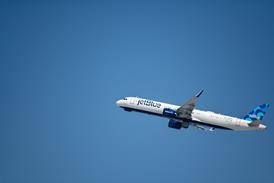It was a tale of contrasting fortunes for the business and general aviation industry in the first nine months of 2015. The latest statistics from the General Aviation Manufacturers Association (GAMA) reveal that propeller-driven fixed-wing aircraft fared poorly between January and September, while their business-jet counterparts revealed a confident performance compared with the same period a year earlier.
Released on 6 November 2015, the GAMA data shows that total aircraft deliveries fell by 107 units year-on-year to 1,558. The value of these shipments totalled $15.7 billion – $200 million more than in 2014.
POWERLESS PISTONS
The piston-engined sector was the worst performer between January and September. Deliveries of single and twin-engined types fell by 11% during this period to 719 aircraft. This compares with 806 deliveries during the first nine months of 2014. Third-quarter shipments dropped by 25 units year-on-year to 255 and by 16 examples compared with the three months ending 30 June.
With the exception of Cessna, which saw a 34-unit hike in shipments across its piston-engined line between January and September, all the airframers recorded a decline in numbers. Diamond Aircraft disclosed a 50% drop in deliveries of its four-seat DA40 during this period from 125 to 62, while Germany’s Flight Design did not hand over any CT piston singles in the last quarter.
Aerospace analyst Brian Foley attributes the weak performance to what he calls the dominant used aircraft market. “The value equation to this very price-elastic buyer segment still favours pre-owned,” he explains. “There may also be some purchase hesitancy based on the controversy surrounding leaded avgas and the uncertainty regarding its future availability,” he continues.
The turboprop sector fared little better that its piston stablemate between January and September due to continued weakness in the agricultural sector. Nine-month deliveries of single and twin-engined models slid by more than 9% year-on-year to 374 aircraft, GAMA reveals.
Air Tractor recorded a drop in shipments of its AT-family from 121 to 88 this year. Thrust Aircraft also saw the tally of its S2R series fall from 28 to 19. GAMA president Pete Bunce blames the fall in demand on the paucity of government finance to support the international purchases. “Our agricultural aircraft sector has been particularly hard hit by the [credit export agency] US Export-Import Bank’s inability to make new financing guarantees since 1 July,” Bunce says. He is hopeful that the US government will renew the facility in the coming months, which could reinvigorate this niche sector.
If the agricultural segment is excluded, however, the core-business turboprop market has remained stable, GAMA reveals. The top performer between January and September was Quest Aircraft. Thanks to its burgeoning international dealership network, shipments of the Kodiak single-engined model climbed by more than 30% to 20 units compared with the same period in 2014.
BULLISH BUSINESS JETS
On a year-on-year basis the business jet sector also improved, climbing 19 units to 465 aircraft in the first nine months.
The latest surge is due to a number of factors: the strengthening US economy, which has precipitated the re-emergence of corporate buyers and high-net-worth individuals; the hike in new aircraft deliveries to the fractional ownership providers such as NetJets and Flexjet; the entry into service of Cessna’s midsize Citation Latitude, of which four were handed over between June and September; and the production ramp-up of a clutch of new light and midsize models. These include the CJ3+, Embraer Legacy 500 and Bombardier Challenger 350. With the service entry of a clutch of keenly awaited designs expected before the end of the year – the Legacy 450, HondaJet and Challenger 650 – the industry would be hoping to continue this positive-growth trend.
The top-end of the business-jet sector has remained stable during the first nine months, according to GAMA. Despite the continued slump in demand for big, long-distance aircraft from the international markets such as China, Brazil and Russia, deliveries of these high-performing types tumbled by only by five aircraft year-on-year to 172. This tally excludes shipments of Dassault Falcon twin and tri-jets, however, as the French airframer does not report third-quarter numbers.
Gulfstream saw shipments of its top-end trio – the G450, G550 and G650/ER climb by five aircraft to 89 business jets between January and September; Boeing recorded a two-aircraft hike in BBJ shipments, including two BBJ787-9s, while deliveries of Embraer’s Legacy 600/650 and Lineage 1000E remained static at nine.
GAMA reveals that Bombardier bore the brunt of this segment’s modest shipment decline. The Canadian airframer recorded a nine unit fall in Challenger 605 shipments year-on-year to 11 aircraft – this is due in part to customers transitioning to the new soon-to-enter service Challenger 650. Deliveries of the high-end Global 5000 and 6000 also fell by three units during the same period to 52 aircraft. Bombardier is now readjusting the Global production rate to reflect the falling sales.
“The market for specific, pedigreed assets is still very liquid,” says aerospace analyst Rolland Vincent. He blames the market instability on the strong demand and availability of “young, lightly flown aircraft”. These models, Rolland argues “are competing with new production aircraft to make things, once again, interesting for buyers, but maybe not so much for original equipment manufacturers due to margin compression.”
Vincent says the association’s latest delivery numbers are in line with industry expectation but he predicts the business-jet sector will end the year on a slighter lower shipment tally than 2014. “We forecast 709 single-aisle business jets of all stripes - this will be just below GAMA 2014 totals [of 717].” he says. “We may be a bit conservative here, but there is some certification risk with new jets such as the HondJet that drives deliveries into 2016,” he explains. “There are also some white-tails that will need to be sold to complete the year.”
Source: Flight International























